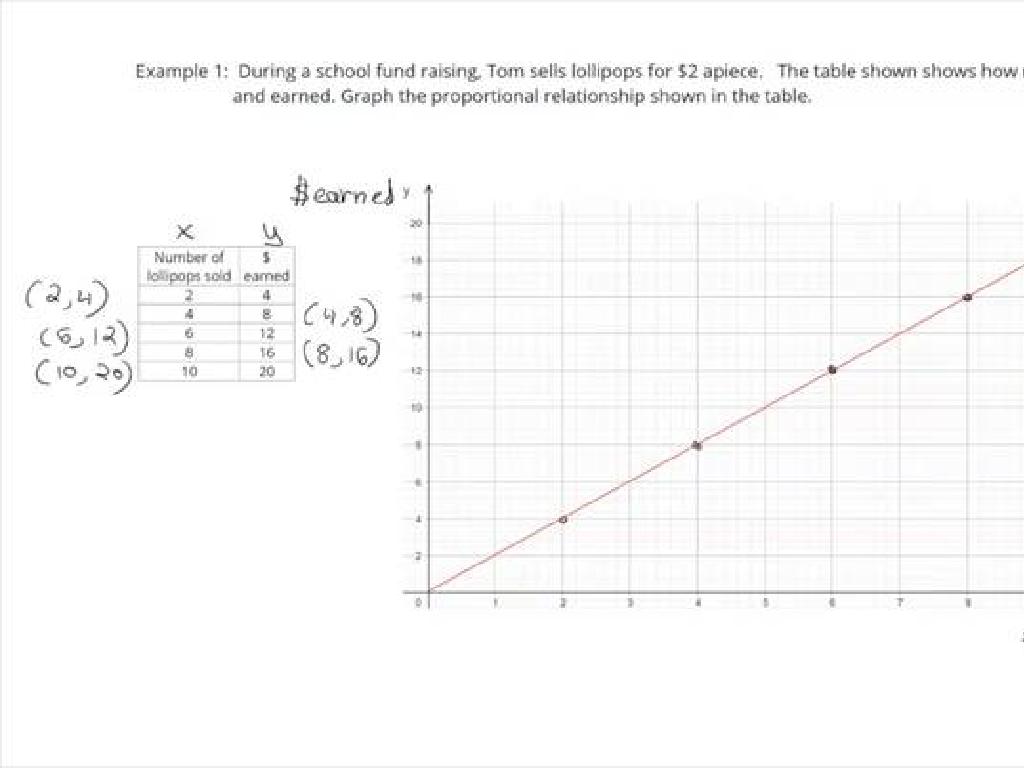Describe The Geosphere, Biosphere, Hydrosphere, And Atmosphere
Subject: Science
Grade: Seventh grade
Topic: Earth'S Systems
Please LOG IN to download the presentation. Access is available to registered users only.
View More Content
Exploring Earth’s Four Main Systems
– Earth’s systems introduction
– Earth is made of four interconnected systems
– Systems’ interactions
– These systems work together, affecting climate and life
– Overview of the geosphere
– The solid earth: rocks, landforms, and inner layers
– Insight into biosphere, hydrosphere, atmosphere
– Biosphere: all life; Hydrosphere: water; Atmosphere: layer of gases
|
This slide introduces students to the concept of Earth’s systems and their interconnectivity. The geosphere represents the solid part of Earth, including landforms and internal structures. The biosphere encompasses all living organisms, while the hydrosphere includes all water on Earth. The atmosphere is the layer of gases surrounding our planet. Emphasize the importance of understanding how these systems interact, as changes in one can affect the others, influencing climate patterns, natural events, and the environment. Provide examples such as volcanic eruptions (geosphere) affecting air quality (atmosphere) and living conditions (biosphere), or river systems (hydrosphere) shaping landscapes (geosphere) and supporting ecosystems (biosphere).
Exploring the Geosphere
– Defining the geosphere
– The solid part of Earth, made of rocks, minerals, and soil
– Earth’s layers: crust, mantle, core
– Crust: Earth’s surface, Mantle: middle layer, Core: center of Earth
– Geosphere’s role in Earth’s systems
– Supports life, shapes Earth’s surface, involved in plate tectonics
|
The geosphere is the solid, rocky part of our planet. It includes the crust, which is the outermost layer where we live; the mantle, which is the thickest layer made of semi-solid rock; and the core, which is the hottest part of Earth and consists of a solid inner core and a liquid outer core. The geosphere plays a crucial role in Earth’s systems by providing nutrients for life, shaping the landscape through processes like erosion and volcanic activity, and driving plate tectonics, which can lead to earthquakes and mountain formation. Encourage students to think about how the geosphere affects their daily lives and the environment.
Exploring the Biosphere
– Defining the biosphere
– The biosphere is Earth’s life layer, extending from the deep sea to the atmosphere.
– Biosphere’s role for life
– It’s vital for supporting all living organisms, providing habitat and resources.
– Interactions with other spheres
– Life interacts with land (geosphere), water (hydrosphere), and air (atmosphere).
– Examples of biosphere connections
– Plants (biosphere) grow in soil (geosphere), take water (hydrosphere), and release oxygen (atmosphere).
|
The biosphere encompasses all ecosystems and living organisms, residing on the land surface, in the oceans, and in the atmosphere. It’s essential for the survival of life as it provides the necessary resources like air, water, and food. Highlight the interdependence between the biosphere and other Earth systems through examples: plants absorb CO2 from the atmosphere, roots stabilize the soil of the geosphere, and animals drink water from the hydrosphere. Discuss how changes in one system can affect the others, emphasizing the delicate balance within Earth’s systems. Encourage students to think of more examples where the biosphere interacts with other spheres and how these interactions support life on Earth.
The Hydrosphere: Earth’s Water Systems
– Hydrosphere encompasses all water
– Includes oceans, rivers, ice, and vapor
– Water exists in solid, liquid, gas
– Ice in glaciers, liquid in oceans, vapor in air
– The water cycle: Earth’s circulatory system
– Evaporation, condensation, precipitation, collection
– Significance of the water cycle
– Supports life, regulates climate, shapes land
|
This slide introduces the hydrosphere as one of Earth’s critical systems, encompassing all water in various forms. Students should understand that the hydrosphere includes not just liquid water but also ice and water vapor. The water cycle is explained as a continuous process that moves water throughout the different parts of the hydrosphere, playing a key role in supporting life, regulating the Earth’s climate, and shaping the landscape. Emphasize the importance of the water cycle in maintaining the balance of Earth’s ecosystems. Provide examples such as the role of oceans in climate regulation and the significance of glaciers in shaping the terrain.
Exploring Earth’s Atmosphere
– Composition of the atmosphere
– Consists of layers like the troposphere and stratosphere, made up of gases such as nitrogen and oxygen.
– Atmosphere’s role in weather
– The atmosphere helps create and influence weather patterns and precipitation.
– Climate regulation by atmosphere
– It acts as a blanket, keeping Earth’s temperature stable enough to support life.
– Atmosphere’s protection for life
– Shields us from harmful solar radiation and is crucial for breathing, weather, and water cycle.
|
This slide aims to provide students with a clear understanding of the atmosphere’s composition and its vital roles in sustaining life on Earth. Begin by discussing the different gases that make up the atmosphere and the significance of each layer, from the troposphere where weather occurs to the stratosphere and beyond. Highlight how the atmosphere contributes to weather and climate, regulating temperatures and enabling life to thrive. Emphasize the protective functions of the atmosphere, such as filtering ultraviolet radiation and maintaining the balance of oxygen and carbon dioxide. Engage students by discussing how changes in the atmosphere can affect climate and weather patterns globally.
Interactions Between Earth’s Systems
– Earth’s systems interconnectivity
– The geosphere, biosphere, hydrosphere, and atmosphere all affect each other.
– Water cycle: A system interaction
– Water evaporates, forms clouds, and falls as rain, connecting hydrosphere and atmosphere.
– Life depends on system links
– Plants (biosphere) need soil (geosphere) and water (hydrosphere) to grow.
– Human impacts on Earth’s systems
– Pollution and deforestation by humans can disrupt these delicate systems.
|
This slide aims to illustrate the complex interactions between Earth’s systems and the importance of each in maintaining the planet’s balance. Emphasize how the geosphere, biosphere, hydrosphere, and atmosphere are not isolated, using the water cycle as a tangible example of these interactions. Highlight the dependency of all forms of life on the synergy of these systems. Discuss human activities like pollution and deforestation, and their negative effects on these systems. Encourage students to think critically about how their actions can contribute to the health of Earth’s systems.
Class Activity: Earth’s Systems Interconnection
– Discuss Earth’s systems locally
– Identify how geosphere, biosphere, hydrosphere, and atmosphere interact in your area
– Create a model of system interactions
– Use materials to represent Earth’s systems and their connections
– Present your group’s findings
– Share your model and explain the interactions with the class
– Reflect on the interconnectedness
– Think about how changes in one system might affect the others
|
This activity is designed to help students understand the dynamic interactions between Earth’s systems. Divide the class into small groups and have them discuss examples of how the geosphere, biosphere, hydrosphere, and atmosphere interact in their local environment. Each group should then create a physical model or diagram to represent these interactions. Afterward, groups will present their findings, explaining the significance of each interaction they’ve identified. Encourage students to consider the ripple effects of changes within one system on the others. Possible activities: 1) Building a terrarium to show biosphere-geosphere interactions, 2) Simulating acid rain’s effect on soil and plants, 3) Demonstrating water cycle and its impact on local climate, 4) Creating a poster showing local wildlife and their habitats to illustrate biosphere-geosphere links.






